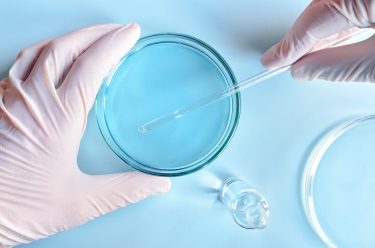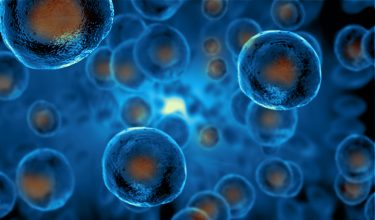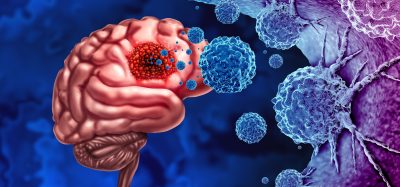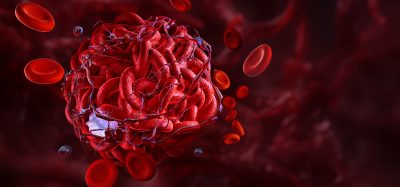Which CHO cell is the right CHO cell?
Posted: 30 March 2021 | Dr Louis Boon (Polpharma Biologics Utrecht) | No comments yet
Dr Louis Boon offers guidance on how to select the best CHO cell for the upstream bioprocessing of biologics. He also explains how automation can aid monoclonality and why the most efficient approach during the development of biological drugs is to utilise an established cell line platform.
Since the approval of the first biotherapeutic in the 1980s, there has been a consistent growth in the biologics market, the technology associated with it and quite notably, the bioprocessing used in their production. Unlike small molecule drugs, biologics cannot be chemically synthesised. Instead, they must be produced by living cells in bioreactors or fermenters. The earliest and most straightforward biologics were produced and hosted in microbial systems, particularly E. coli. The increasing complexity of the protein molecules introduced a shift to yeast cells as hosts. Subsequently, to produce monoclonal antibodies (mAbs), mammalian production platforms were established. mAbs are the most advanced, valuable and sophisticated class of biotherapeutics. They are complex proteins with defined tertiary structures, including an N-linked glycan on the constant domain of the heavy chain, requiring specific post-translation modifications (PTMs) and a cellular system to perform complex protein folding and glycosylation.
A recent analysis revealed that 51 percent of currently approved biologics are produced in mammalian cells. Key mammalian cell lines used in production include Chinese Hamster Ovary (CHO) cells, Baby Hamster Kidney (BHK) cells and mouse myeloma cells, including NS0 and SP2/0, as well as human cell lines (HEK293, HT-1080). Of these, CHO cells are the most widely used, accounting for over 60 percent of mammalian cell culture-derived biologics currently on the market. Given that the biologics are produced, folded and secreted by these mammalian cell lines, they form the foundation of the biotech industry. Therefore, it is imperative that the production cell line is robust, stable and produces high-quality products. It is not an exaggeration to say that cell line development is the most crucial point in the biopharmaceutical manufacturing process, as cell lines form the backbone of any biologic drug development from pre-clinical studies to the patient.
Cell line development challenges and how to overcome them
The manufacture of a biologic begins after a disease target has been identified and a protein (ie, the biologic product) prototype drug has been designed to interact with it. After the prototype drug has been designed, cells are transfected using expression plasmids containing genetic information to express the biological prototype drug. During the first steps of cell line development, clones are screened for productivity, and monoclonality for regulatory requirements is ensured by limiting dilution. This procedure aims to reveal a cell line that can produce the desired protein product with the expected yields and quality.
Cell line development is critical for biological drug discovery and forms the foundation for development programmes”
Cell line development is critical for biological drug discovery and forms the foundation for development programmes. In this sense, the process of identifying a high quality cell line is akin to laying the foundation when building a house, where poor stability and an inappropriate level of construction will have severe consequences for higher floors during development. Many important decisions that affect the outcome of the biologic are therefore made during early discovery and development. This requires methodical chemistry, manufacturing and control (CMC) processes to consistently produce robust, safe and effective products. Several factors, such as choosing the appropriate cell line production platform, expression systems that enhance product quantity and the use of manual or automated technology, all have considerable influence during the different phases of the development process.
Choosing the right CHO
CHO cells comprise various lineages such as CHO‑DXB11 (DUKX), CHO-K1, CHO-DG44 and CHO-S that share a common ancestor. Out of these, CHO-DXB11 (DUKX), CHO-K1 and CHO-DG44 are most widely used.
A recent study has shown that the cellular phenotype of the CHO cell line is highly relevant for determining specific preferences – for either mAb production or biomass synthesis. The study results suggest that CHO-K1 metabolism favours mAb expression, whereas CHO-S metabolism shows a preference for biomass formation and CHO-DG44 ranks between the two. As these preferences were independent of process type (ie, batch, fed-batch or perfusion) and cell culture media, the choice of CHO host cell line exhibited a fundamental impact on the production process.1 It became clear that CHO-K1 also has the highest specific productivity, which is considered the holy grail in cell line and process development.


Therefore, choosing the right parental cell line based on published and in-house research cannot be further encouraged. Building cell line expertise in-house or finding expert partners who have developed and established stable cell lines early in the development process can go a long way to increasing the chances of success to market. The significant advantage of a proprietary CHO platform is that all available and acquired expertise and newly obtained knowledge can be directly leveraged for process optimisation.
Enhancing production
Specific cell productivity – harness the power of the cell
An exciting technology that has been developed focusing on increasing specific cell productivity is based on increasing the cellular volume rather than using the traditional method of increasing the viable cell density (VCD). Using this strategy, total biomass increases in the absence of increases in VCD. High levels of VCD can disadvantage downstream processing as higher VCD provides difficulties during the clarification process and requires greater filter areas.
The addition of the amino acid Citrulline to the cell culture medium increases volumetric productivity. The unique use of Citrulline enables a distinctive balance of acidic and basic species in the culture medium that increases the volume of mammalian cells while decreasing VCD by 60 percent. In the presence of Citrulline, host cell protein content can be reduced by 40 percent and the filterability for clarification can be increased by 40 percent/gram of product due to the increase of cell-specific productivity. The latter has huge consequences for the good manufacturing practice (GMP) footprint of the cell culture clarification step as the increase in specific productivity results in a reduction in cell debris needing removal during clarification, resulting in less product loss and consequently lower costs.
Expression systems and selectable markers
The most widely used promoters/enhancers are derived from viruses, such as the cytomegalovirus (CMV) promoter and simian virus 40 (SV40) promoter or the non-viral promoter for elongation factor 1α (EF1α) from CHO cells. The three CHO cell strains most widely used by industry are DG44, DUXB1 and CHO-K1, which all leverage the use of selection markers to enhance gene expression and product quantity through selection. Classical selection markers used for CHO cells include glutamine synthetase (GS) and dihydrofolate reductase (DHFR).2
The significant advantage of a proprietary CHO platform is that all available and acquired expertise and newly obtained knowledge can be directly leveraged for process optimisation”
Choosing CHO strains DG44 or DUXB1 or CHO-K1 strains (such as CHO-K1S), which are deficient in DHFR or GS, respectively, provide a blank canvas for the addition of expression vectors containing the selection marker gene for DHFR or GS and the gene encoding the biologic. These metabolic selection markers can be utilised by the stepwise increase in the concentration of the DHFR inhibitor, methotrexate (MTX), or GS inhibitor (MSX), which in turn results in an amplification of cells expressing the marker and gene of interest. The benefit of the selection marker is that cells that can function under high concentrations of the inhibitor will have increased copies of the mAb‑encoding gene.2
However, one major drawback of the DHFR‑based system is the requirement of qualified assays to prove the removal of MTX in the final mAb. In addition, products produced in a DHFR-deficient cell line can be more prone to oxidation by specific amino acids like methionine and tryptophan as there is no endogenous DHFR to carry out radical scavenging. CHO-K1 cells, therefore, offer an advantage over the DHFR‑deficient DG44 or DUXB1 strains, as they have endogenous DHFR activity and the GS-based system has a shorter timeline to stable cell selection and produces cells with high productivity without substantial gene amplification.
Screening for the right clone
Following selection, the next step in cell line development is single cell cloning to prove that the cell line is monoclonal. Ideally, a good production cell line should harbour five key characteristics. These include the ability to scale, demonstrated stability for 70 to 100 generations in serum-free chemically defined conditions, high cell‑specific productivity (pg protein/cell/day) (Qp) and titres ranging from 4-8g/l and monoclonality, as the cell line should be derived from a well‑defined single cell.3


After single cell cloning, the highest producing cells are characterised further and progressed for scaled-up production. The advantages of incorporating highly effective and robust automated technology during cell line development significantly improve overall timelines and cell line quality. Ultimately, this leads to a more robust foundation that hopes to produce stronger candidates for downstream processing.
Conclusion
Added to this complexity and variability is the strict focus on the monoclonality of the producer cell line by the regulatory authorities. Automation is crucial for ultimate proof of monoclonality accompanied by short timelines. The most efficient approach in biological drug development is to use an established cell line platform. Furthermore, work with a partner that understands the regulatory environment, has a proprietary CHO cell platform and has worked with the authorities in order to boost your chances of a successful outcome because all available and acquired expertise and newly obtained knowledge can be directly leveraged for your process optimisation.
About the author
Dr Louis Boon has over 25 years of experience in the discovery and development of novel antibody therapeutics and is the inventor of over 20 patent applications for biologics across different disease areas. He has co-authored over 320 publications in international scientific journals in the field of medical biotechnology. His passion to develop and deliver safe and effective medicines to patients has led him to take the role of Chief Scientific Officer at Polpharma Biologics Utrecht, where he is responsible for their antibody pipeline and takes the lead on their development of high-producing cell lines and CMC development.
References
- Reinhart D, Damjanovic L et al. 2018. Bioprocessing of Recombinant CHO-K1, CHO-DG44 and CHO-S: CHO Expression Host Favor Either mAb Production or Biomass Synthesis. Biotechnology Journal.
- Strohl W, Strohl L. 2012. Therapeutic Antibody Engineering: Current and Future Advances Driving the Strongest Growth Area in the Pharmaceutical Industry. Elsevier.
- Wang W, Singh M. 2013. Biological Drug Products: Development and Strategies. John Wiley & Sons, New Jersey, US.
Related topics
Biologics, Biopharmaceuticals, Biotherapeutics, Cell Cultures, Cell Line Development, Drug Development
Related organisations
Sphere Fluidics Ltd.








